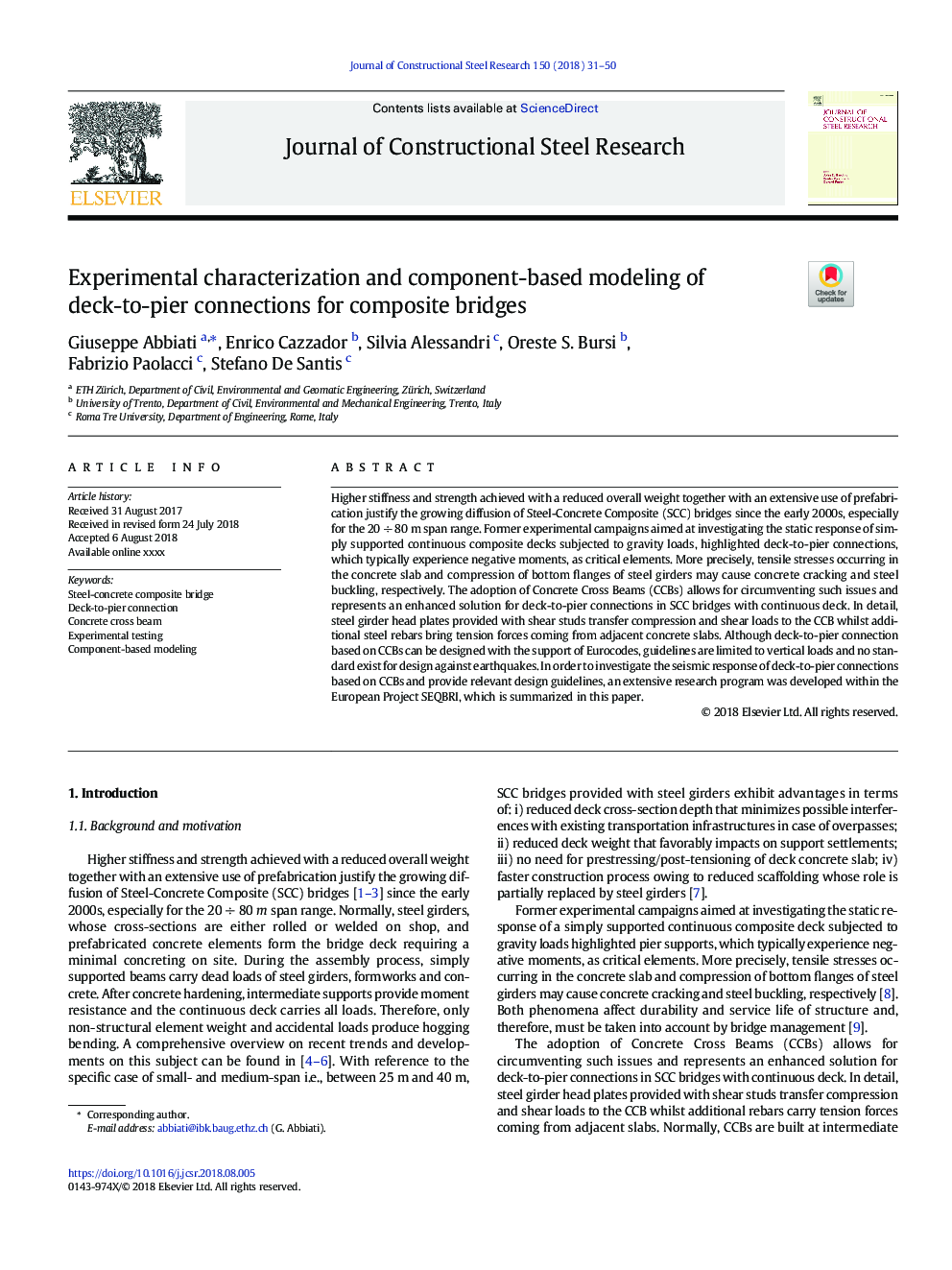| Article ID | Journal | Published Year | Pages | File Type |
|---|---|---|---|---|
| 8947128 | Journal of Constructional Steel Research | 2018 | 20 Pages |
Abstract
Higher stiffness and strength achieved with a reduced overall weight together with an extensive use of prefabrication justify the growing diffusion of Steel-Concrete Composite (SCC) bridges since the early 2000s, especially for the 20â¯Ã·â¯80â¯m span range. Former experimental campaigns aimed at investigating the static response of simply supported continuous composite decks subjected to gravity loads, highlighted deck-to-pier connections, which typically experience negative moments, as critical elements. More precisely, tensile stresses occurring in the concrete slab and compression of bottom flanges of steel girders may cause concrete cracking and steel buckling, respectively. The adoption of Concrete Cross Beams (CCBs) allows for circumventing such issues and represents an enhanced solution for deck-to-pier connections in SCC bridges with continuous deck. In detail, steel girder head plates provided with shear studs transfer compression and shear loads to the CCB whilst additional steel rebars bring tension forces coming from adjacent concrete slabs. Although deck-to-pier connection based on CCBs can be designed with the support of Eurocodes, guidelines are limited to vertical loads and no standard exist for design against earthquakes. In order to investigate the seismic response of deck-to-pier connections based on CCBs and provide relevant design guidelines, an extensive research program was developed within the European Project SEQBRI, which is summarized in this paper.
Related Topics
Physical Sciences and Engineering
Engineering
Civil and Structural Engineering
Authors
Giuseppe Abbiati, Enrico Cazzador, Silvia Alessandri, Oreste S. Bursi, Fabrizio Paolacci, Stefano De Santis,
